A New Generation
The recent propagation of climbing's popularity has created an influx of new climbers, new vendors and new technology to our crags. Gym climbers blinded by the safety and expediency of gym climbing are seeking to try their hand at outdoor rock; increased traffic at local crags is spawning the birth of easy clip anchors for effortless cleaning and quick turn around of routes; and the birth of a generation of convenience is pushing people to climb with less training, less understanding and a lack of proper climbing safety knowledge. While many of these things are nice and make life and climbing more convenient, they can also create safety concerns. I am sure there are other climbing safety sources, but I highly recommend reading Mountaineering: Freedom of the Hills and Self-Rescue to brush up on playing it safe at the crag.
Hardware
Hardware requires the eyes of all climbers in the community to inspect and inform local climbing regulatory agencies to rebolt when necessary. The weather, traffic, rock fall or erosion, and improper use can, and will, wear down hardware. If a bolt is spinning, has lots of rust or just looks plain haggard, it likely needs to be rebolted. Also, be weary of webbing or draws that have been left behind. Visit The American Safe Climbing Association (ASCA) for more information. http://www.safeclimbing.org/
Rock Fall
Rock fall, although sometimes a natural occurrence, can be either avoided or the risk mitigated. Its common sense to wear a helmet in areas with tons of rock fall (El Potrero Chico). Avoid pulling on loose or hollow sounding rock. If it flexes when you pull on it or sounds like a bongo when you knock on it, don't use it. Also, if you can redirect your rope to not let it dislodge loose rock onto your belayer or climbers below, it's always ideal. Most importantly, yell "ROCK!!!" if you knock something off.
Human Error / Negligence
Many of these accidents occur when climbers don't tie-in appropriately, don't tie a knot in the end of their rope when belaying or rappelling, fail to set up an appropriate anchor, or aren't paying attention when belaying. As climbers and as human beings, if accidents don't happen regularly, it's easy to become lax on safety, especially when double checking knots and equipment, and belaying. When the crags get crowded we have to stay focused.
Be Prepared
Beyond the recommended reading, I would also highlight the importance of having some sort of wilderness medical training and even potentially rescue insurance. Having the know-how to resuscitate and check for spinal injuries could mean the difference in your climbing buddy making it at all, much less climbing again. Additionally, the American Alpine Club offers rescue insurance, which could come in handy when climbing in back country or international destinations where assistance may financially ruin you. Insurance at all is key. Think about it, if you’re already surviving on a shoe string camping out at crags, what’s going to happen when you owe $30K in hospital bills because you wanted to save $60 a month in insurance?
Support
As climbers we rely on each other for support in pulling the crux and topping out our projects. The same goes for recovering from a serious injury. If you know someone who has been injured reach out to them with moral or financial help if needed. Same goes for others involved in incidents, whether it’s the belayer or someone at the scene, it’s always best to do what we can to keep them stoked and not traumatized.
It seemed important to highlight some of the things that came to mind when I heard about several of the recent climbing incidents. And, since climbing incidents happen and are sometimes unavoidable, it's always best to be prepared. Most importantly, have fun when you're climbing. That's really what it's all about. After all avoiding accidents will allow you to avoid missing more climbing.
Know of some good climbing safety resources? Have a case study or injured friend in need? Leave a comment and let us know what's going on.
Resources:
*The American Alpine Club, particularly their Accidents in North American Mountaineering book http://www.americanalpineclub.org/index.php
*The American Safe Climbing Association (ASCA) http://www.safeclimbing.org/
*Book – Mountaineering: The Freedom of the Hills http://www.amazon.com/Mountaineering-Freedom-Hills-Mountaineers-Society/dp/0898868289
*Book – Self-Rescue http://www.amazon.com/Self-Rescue-Rock-Climb-David-Fasulo/dp/0934641978/ref=pd_bbs_sr_2/10394605455014209?ie=UTF8&s=books&qid=1176141930&sr=1-2
*Tradgirl Climbing Safety FAQ Page http://www.tradgirl.com/climbing_faq/safety.shtml
*
*The forum pages of Rockclimbing.com can host some good recommendations and case studies http://www.rockclimbing.com/
*Wilderness First Responder on Wikipedia http://en.wikipedia.org/wiki/Wilderness_First_Responder
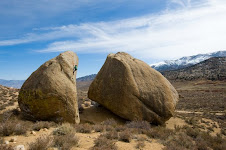
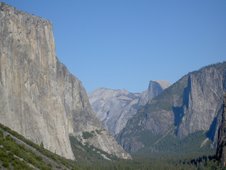



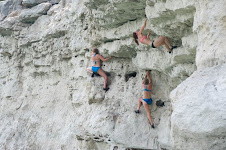
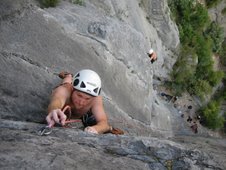
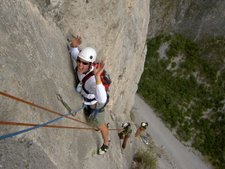
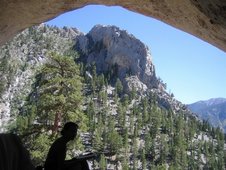
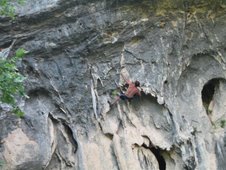
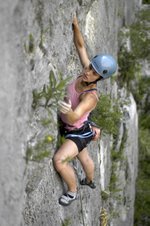
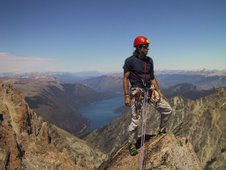
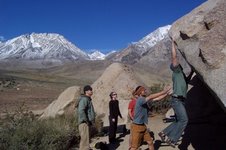
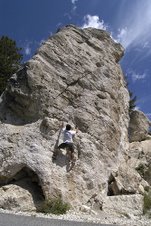
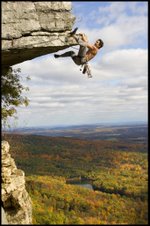
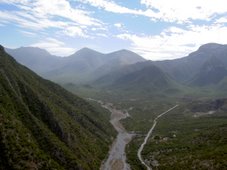
3 comments:
A friend of mine asked me to post this note about a local Vegas climber who took a bad fall recently. If you have the means or have time to send a note of inspiration, please do. Also, if you’re going to be in Vegas this weekend, check out their fundraiser party on Saturday, April 14th.
Note:
As many of you may have heard, Isaac Palatt fell 110' on the 11th of
March and lived to tell about it. He is currently still in the hospital and
will be facing a long road to recovery. Injuries include both heels broken,
left elbow broken, four vertebrae fractured, broken rib, bruised lung, and
lots of lacerations....
A Las Vegas local, he grew up in our scene. I'll never forget him with his
6" tall mohawk climbing in the gym. He's our little bro and we owe it to
him to try to help him out whether it's keeping him psyched (yes, he still
loves to talk climbing) or financially.
A fund account has been opened to accept donations especially since his
mother, Kay, will have to take considerable time off to take care of Isaac
on top of all the medical bills/ copays that will have to be paid.
Anything helps...
Donations can be remitted to....
Community Bank (of Nevada)
for Isaac Palaat
7580 W. Sahara Ave.
Las Vegas, NV 89117
Please write the account number on the memo line... 0701001518
Also the checks should be written to Isaac Palatt
If you'd like give him a call...or send a note via myspace at http://www.myspace.com/isaacsolomon
323-704-5562
Thanks in advance for your support,
Crista Hollenberg & Jarrett Hunter
This weekend’s Fundraiser event:
Hey all. I know you're not all local to Vegas, but if you'll be anywhere near town this weekend, please come out. Dianna and Zico at the Garagemahal have kindly offered to throw a huge bash for Isaac Palatt. Here are the rules.
You must wear a toga!!!!
Isaac had to for two and a half weeks so it's only fair.
We will have beer, games, and music!!
The kick ass Annum Ford will be rocking the house!!
Musicians.. this venue is a wet dream, you must check it out!
Saturday 14th... around 7ish
The Garagemahal is located at 6300 West Tropical Pkwy. 89130 (Mapquest it for best results) this is between Jones and Torrey Pines (to the east/west) and the 2-15 and Ann road (north/south)
The property will be marked with a spinning red light... please park in the street then walk into the back yard... it'll be pretty obvious.
Bring your friends! forward this e-mail!!! I'll see you all there!
Funny you should mention gym climbers.... A few weeks ago, a newer climber came out to the local crag with a couple friends who had never climbed before. He as at the second bolt on the 5.9 warmup when one of the regulars noticed that he was leading with a roped tied in to a single locker clipped to his belay loop. He had also backclipped the first two bolts, and the knot he had tied had less than 1" of tail on it. We talked him into descending to correct the problems. He was a smart guy, but he had learned to climb in a gym, and had a false sense of confidence about transferring his "skills" to outside climbing.
I'm always a bit conflicted about if and how to point out someone's safety blunders. A belayer with a loop of rope on the ground, or taking his brake hand off of the ATC, a knot with no tail, a backclipped draw, a shabby looking or feeling rope, a leader choosing to skip a bolt that shouldn't be skipped, etc. Sometimes it's obvious that the 'offender' is a beginner, but sometimes not, and unless you're a seasoned pro, speaking up always runs the risk of offending someone.
In the end, it's best to speak up. If you don't and something bad happens, you'll have to live with the fact that you saw it coming and said nothing, and that's much worse than the temporary embarassment of mistakenly attempting to correct someone that knows what they're doing.
Also, on a completely different safety related note- especially with high altitude or multi-pitch climbing, weather is the cause of many accidents. I found a good article here about observing the sky and predicting storms.
Post a Comment